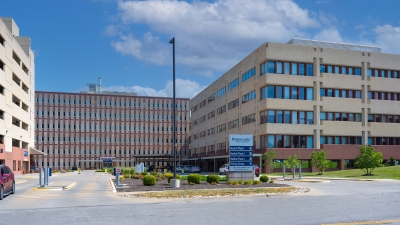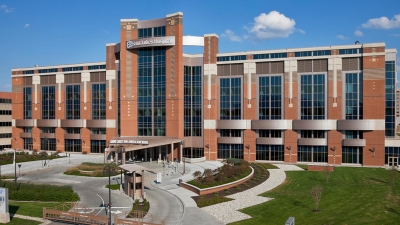Vein Program
Our expert vein sonographers and board-certified cardiologists provide specialized treatment for complex venous disorders not available at most other vein clinic practices, including deep vein disorders of the lower extremities, ilio-caval disorders, venous disorders of the upper extremities, and congenital disorders.
The Vein Center at Saint Luke's Hospital is a unique program offered through Saint Luke’s Mid America Heart Institute. Our expert vein sonographers and board-certified cardiologists and vascular surgeons treat complex venous disorders with methods not available at most other vein clinics.
We offer non-surgical, minimally invasive, and surgical treatment options for vein conditions, including deep vein disorders of the lower extremities, ilio-caval disorders, venous disorders of the upper extremities, and congenital disorders.
Conditions
Venous disease is a common vascular disorder where there is high pressure buildup in the veins. Our team treats:
Varicose Veins
Deep vein thrombosis (DVT)
Diagnostics
Advanced technology and diagnostics help identify problems in the early, most treatable stages of vein disease.
Duplex ultrasound
Computed tomography angiography (CT)
Patient Resources
These resources will help you better understand vein disease.
American Vein & Lymphatic Society
Society of Vascular Medicine
Society of Vascular Surgery
American Heart Association
Society for Cardiovascular Angiography and Interventions
Frequently Asked Questions
How do I know if I have vein disease?
A majority of patients will have visible veins on the surface of the skin that could indicate vein problems. For some patients, diseased veins may be deeper in the leg and not visible from the surface. For this reason, knowing the symptoms associated with vein issues can help diagnose the issue. Pain, swelling, tired and heavy legs, skin discoloration, itching and burning, cramps, and bulging—especially in the calves—are all symptoms of vein issues and can easily be tested at Saint Luke's Vein Clinic.
How common is vein disease?
Approximately 50% of the population has some form of vein disease. Varicose veins effect 15 to 20% of adults and more than 50% of people over 50. Women have a higher incidence than men, but men are also affected.
What causes vein disease?
The single most common cause of vein disease is hereditary. Approximately 70% of all patients with varicose veins have parents with the same condition. Pregnancy, especially multiple pregnancies, including age, obesity, and jobs with prolonged standing, all contribute to vein disease.
Why do I need to wear compression stockings before treatment?
Compression stockings are a type of conservative treatment that gently squeeze your legs and help blood move up your leg. They help reduce the symptoms associated with venous disease and are usually a first step requirement for insurance companies. Stockings are available for purchase in the clinic.
How quickly can I return to activity after vein treatment?
Patients are walking immediately following the procedure and typically resume normal activities the same day.
How soon will my symptoms resolve after treatment?
Many patients notice an immediate relief of symptoms such as pain, swelling, leg heaviness, and fatigue. The full benefit of the procedure may take several weeks.
Locations

Saint Luke’s Hospital Vascular & Vein Center

Saint Luke's Mid America Heart Institute
Recent News
Article